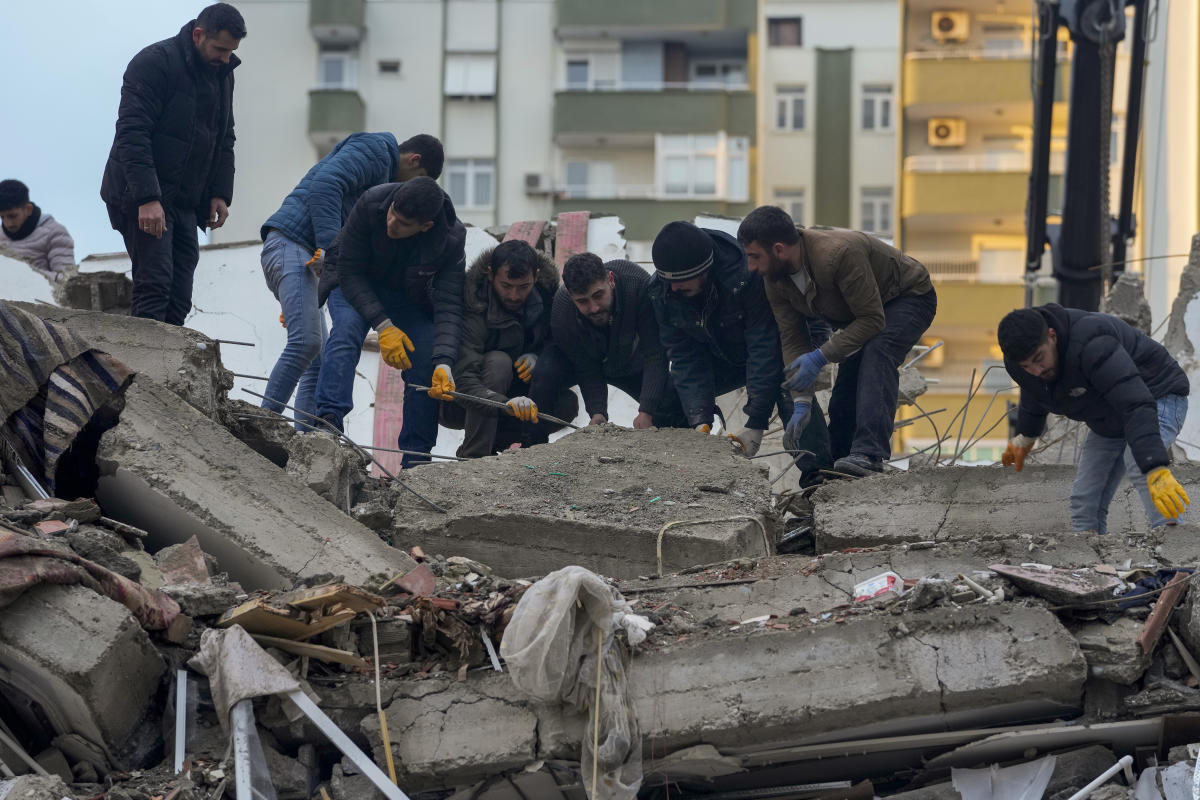[ad_1]
: Investigating Possible Links between Turkey’s Earthquake and Buffalo and Ontario
The powerful and devastating earthquake that killed thousands in Turkey and Syria is unrelated to the 4.2 magnitude earthquake that struck Buffalo and parts of southern Ontario on Monday morning.
John Cassidy, an earthquake seismologist at Natural Resources Canada, says both cases are relatively rare occurrences. The 7.8 magnitude quake in Turkey is one of the strongest in the region in 100 years and has ruptured a fault hundreds of kilometers long.
However, the Buffalo and Ontario earthquake most likely has nothing to do with it.
“There are many aftershocks and we see earthquakes caused by this big main tremor, but they tend to be within the length of the fracture zone,” he says Yahoo News Canada. “In that case, you would see the potential within a radius of 500 kilometers for further earthquakes to be triggered.”
There have been studies looking at earthquakes triggered at great distances, but they’re related to the seismic waves from a large earthquake rolling through a region and triggering tiny earthquakes, Cassidy explains. This is generally observed in volcanic regions.
“That’s not the case in New York (and Ontario),” he says. “The timing isn’t right either.”
That’s not to say major earthquakes aren’t expected in various parts of Canada. While it’s not uncommon for earthquakes to shake parts of Ontario, they are fairly rare. But the Ottawa Valley region is a seismic zone that continues into Temiscaming, the St. Lawrence Valley, and the Lower St. Lawrence. The Charlevoix region of Quebec has experienced many large earthquakes, including those measuring up to 7 on the Richter scale.
RELATED: BC’s big earthquake: ‘It could be tomorrow, it could be in 200 years’
There have also been large earthquakes along Canada’s eastern borders, such as off the coast of Newfoundland and Baffin Island.
“Although these are rare events, they do happen,” says Cassidy.
However, the largest and most frequent earthquakes occur along the west coast of Canada, from Vancouver Island up to the Yukon, where earthquakes up to magnitude 9 have been recorded.
As for the “Big One” expected along the south coast, Cassidy says it’s not overdue, but we’re well into the cycle for when it can be expected.
These earthquakes are rare, occurring about every 300 to 800 or 900 years. The last one was in 1700, which is three,323 years ago, so we’re definitely in the cycle.” John Cassidy, earthquake seismologist, Natural Resources Canada
Other types of extreme earthquakes have been felt in recent years. In 2012, a 7.8 magnitude earthquake struck off the coast of Haida Gwaii – the same magnitude as in Turkey. The quake triggered many landslides and a tsunami, but it was a sparsely populated area and, due to the distance, there was little damage to buildings.
Earthquake warning system in progress in Canada
Although there is no way to predict earthquakes, Cassidy says we protect ourselves from them through building codes, which are updated every five years, and bridge codes. Models have also been developed of what we can expect across Canada when it comes to the types of ground shaking and how long they might last.
Experts do this by looking at recorded earthquakes across the country and large ones around the world that are similar to those known to occur in Canada.
What is currently being developed are early warning systems that do not predict earthquakes but give people seconds to minutes before strong tremors occur. The system detects the waves that occur after the earthquake so that people in the area can be alerted.
“It takes time for these waves to spread,” explains Cassidy. “Really strong waves spread at a speed of about three and a half kilometers every second. So if you’re some distance away from the earthquake, it’s possible to get a warning before it hits.”
Similar systems are currently operating in Mexico, Japan, California and Oregon. It allows high-speed trains and traffic to stop entering tunnels, alarms in hospitals to warn surgeons about surgeries, and elevators to stop operating.
“There are many automated systems that do some very simple but very useful things before there are big shocks,” he says.
Cassidy says the alert system should be available across Canada by next March.
[ad_2]
Don’t miss interesting posts on Famousbio










